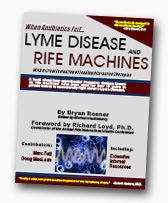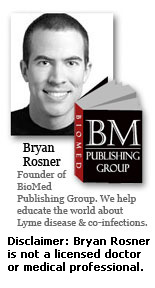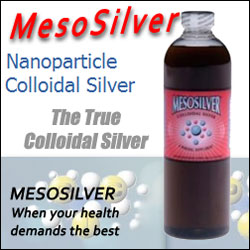Biofilms and Lyme Disease?
By Bryan Rosner on Oct 15, 2009 in Research
Every year, there is a new buzzword in the Lyme disease community. For a year or two, everyone focuses on the buzzword, and researchers and physicians are in a frenzy to find new treatments for the buzzword. Supplement companies go banannas making money on the buzzword.
In 2009, the buzzword is “biofilms.” I’m not exactly sure how much biofilms really have to do with Lyme disease, and how much of it is just “the word of the year buzz.” I’ll leave that to the experts to decide. But, one of the interesting factors when it comes to biofilms, and the reason I’m even writing about it, is that this buzzword may be a clue as to why rife machines may work to treat Lyme disease. (What is a rife machine?)
It used to be thought that rife therapy just vibrated bacteria to death. Now, however, it appears that rife may also be acting on bacterial biofilms. This is not my opinion; there are numerous studies concluding this. In fact, the word “biofilm” is actually used in the studies showing that EMF disrupts biofilms. They use this technology in sewage and agricultural purification; a technology similar to rife therapy
Rife and EMF studies
For example, consider the following studies:
http://ps.fass.org/cgi/content/full/86/10/2139
http://www.ncbi.nlm.nih.gov/pubmed/12031461
A Radio Frequency Electric Current Enhances Antibiotic Efficacy against Bacterial Biofilms
http://www.pubmedcentral.nih.gov/articlerender.fcgi?artid=529182
Engineering Approaches for the Detection and Control of Orthopaedic Biofilm Infections
http://www.pubmedcentral.nih.gov/articlerender.fcgi?&pubmedid=16056027
Mechanism of electrical enhancement of efficacy of antibiotics in killing biofilm bacteria.
http://www.pubmedcentral.nih.gov/articlerender.fcgi?artid=188289
These studies all support the hypothesis that rife may lead to symptom reduction not just because of its ability to disrupt spirochetes, but also because of its ability to disrupt Lyme-related biofilms.
To learn more about rife machines, read Lyme Disease and Rife Machines.
Where to go from here?
Some people also use serrapeptase, nattokinase, or, more recently, Bolouke also known as Lumbrokinase, to try to disrupt bacterial biofilms. I’m not sure how well these work, but I’m sure the experts will be providing us with some additional answers in the future.
In the meantime, if you want to read more about how Lyme doctors are treating Lyme disease, I suggest you read Insights Into Lyme Disease Treatment, a book that is based on interviews with 13 Lyme Literate Medical Doctors.  It was written by Connie Strasheim, and she basically saves you thousands of dollars and a lot of time in travel, by bringing the health care practitioners’ treatment to you, rather than you having to go travel to find them.
It was written by Connie Strasheim, and she basically saves you thousands of dollars and a lot of time in travel, by bringing the health care practitioners’ treatment to you, rather than you having to go travel to find them.
Links
I will leave you with some good links for further investigating biofilms:
Lyme Bytes: Getting Rid of Gut Biofilm and The Critters It Protects
Introduction to Biofilms: Negative and positive impacts of biofilm
Biofilms and Lyme Disease: F.I.G.H.T for your health!
Biofilm – Wikipedia, the free encyclopedia








